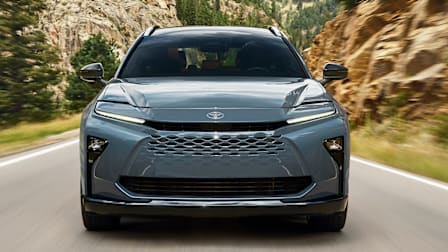How to Get Back Into Driving Again
Many older adults haven’t been behind the wheel much lately. Brush up on your skills with these steps.

If you haven’t driven a lot during the pandemic, it might be tempting to head out on the highway as soon as you’re fully vaccinated. But driving skills can get rusty if they go unused, especially for older drivers.
“Don’t get behind the wheel and think it’s suddenly going to all come back to you,” says Andrew Gross, a spokesperson for the AAA Foundation for Traffic Safety. These tips can help.
Get Your Car Ready
“If your car has been sitting for a long time—say, more than a few weeks—have a mechanic give it a once-over before you increase the amount of driving you do,” says John Ibbotson, CR’s chief mechanic. Here’s why: Longer journeys can put more demands on a vehicle than the short trips to the grocery store that may have been your mainstay since the pandemic hit.
Deal With Health Problems
Consider whether any new or worsening conditions, such as arthritis, diabetes, or vision impairment, might affect your driving. Gross recommends a self-evaluation first: “Have there been any physiological changes? Have those aches and pains increased?” Friends, family, and your doctors can also help you make those assessments.
Look into catching up on eye exams and hearing tests you may have put off. And if you started taking any new medications recently, even over-the-counter ones, ask your doctor or pharmacist whether any side effects or drug interactions might impair driving, Gross says.
Fine-Tune Your Skills
The roads have changed during the pandemic. More people are walking, cycling, or riding scooters—which may make driving more challenging—and reduced commuter traffic has led to increased speeds on highways. Despite fewer drivers on the road in 2020, crash fatalities increased by 8 percent, according to the National Safety Council.
So you might want to take a low-cost online course from AAA or AARP designed to sharpen the skills of older drivers. (In some states, this will reduce your insurance premiums.) Spend time while parked reacquainting yourself with your car’s buttons, knobs, and touch screens. Give the manual a read-through, and before driving, program radio presets or set navigation destinations.
If it’s time to replace your vehicle, choose one with easy-to-use controls and key active safety systems. CR’s survey data shows that drivers older than 65 report high satisfaction with automatic emergency braking (AEB), which can slow or stop a car to prevent a crash or limit its severity, and blind spot warning (BSW), which produces a visual and/or audible alert if there’s another vehicle in your car’s blind spot. “Advanced driver assistance systems such as AEB and BSW are designed to do just that—assist,” Stockburger says. “If we don’t have the mobility, reaction time, and perhaps vision that we once had, these systems can act like an attentive co-pilot and help keep us out of a crash.”
Editor’s Note: This article also appeared in the June 2021 issue of Consumer Reports On Health.




















